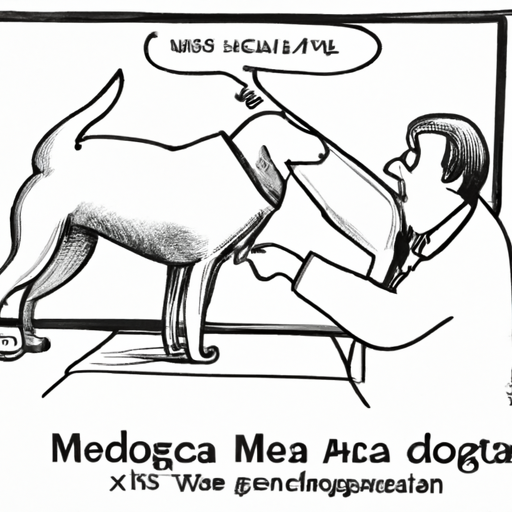As a caregiver for your beloved four-legged friend, understanding their health is paramount to ensure their overall well-being. One condition that could potentially affect your dog’s health is megaesophagus.
What is Megaesophagus?
Megaesophagus is a condition where a dog’s esophagus, the tube that connects the throat to the stomach, becomes enlarged. This enlargement prevents the normal movement of food and liquid from the throat to the stomach.
Symptoms of Megaesophagus
You may notice the following symptoms in your dog:
- Regurgitation of food or water
- Loss of appetite
- Weight loss
- Excessive drooling
- Difficulty swallowing
It’s important to note that these symptoms might not all appear at once. They could also be indicative of other health issues, so don’t panic.
Causes of Megaesophagus
Megaesophagus can occur due to several reasons:
- Congenital defect: Some breeds are genetically predisposed to this condition.
- Neuromuscular disease: Conditions such as myasthenia gravis can cause megaesophagus.
- Unknown causes: In some cases, the exact cause remains unknown.
Diagnosis and Treatment
If you suspect your dog has megaesophagus, it’s crucial to consult your vet immediately. They will likely perform tests such as X-rays or blood tests to confirm the diagnosis.
Treatment will depend on the underlying cause. Options could include:
- Dietary changes: Feeding your dog in an upright position, using a specially designed feeding tube, or changing their diet to more easily digestible food.
- Medication: Drugs to help improve muscle tone in the esophagus or treat underlying conditions.
- Surgery: In severe cases, surgery may be required.
| Treatment Method | Description |
|---|---|
| Dietary changes | Feeding your dog in an upright position, using a specially designed feeding tube, or changing their diet to more easily digestible food. |
| Medication | Drugs to help improve muscle tone in the esophagus or treat underlying conditions. |
| Surgery | In severe cases, surgery may be required. |
Living with Megaesophagus
While it might be overwhelming, managing your dog’s condition is possible with the right care and attention. Learn to recognize the signs of trouble, such as difficulty swallowing or a change in appetite.
Ensure you follow your vet’s advice closely and have regular check-ups to monitor your dog’s condition.
Frequently Asked Questions
Q: Can a dog live a normal life with megaesophagus?
A: Yes, with proper care and management, a dog with megaesophagus can lead a happy and fulfilling life.
Q: Is megaesophagus painful for dogs?
A: The condition itself isn’t painful, but it can lead to complications such as aspiration pneumonia, which can cause discomfort.
Q: Is there a cure for megaesophagus?
A: There’s no definitive cure, but the condition can be managed with dietary changes, medication, and in severe cases, surgery.
By understanding megaesophagus, you can provide the best care for your dog. Remember, regular vet check-ups are essential in maintaining your pet’s health.



